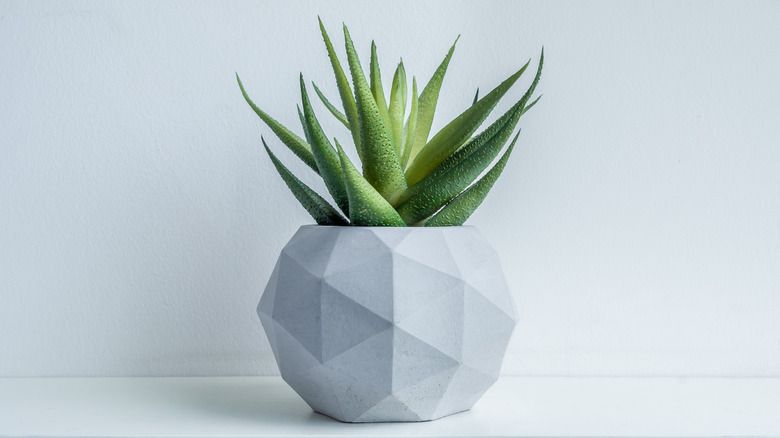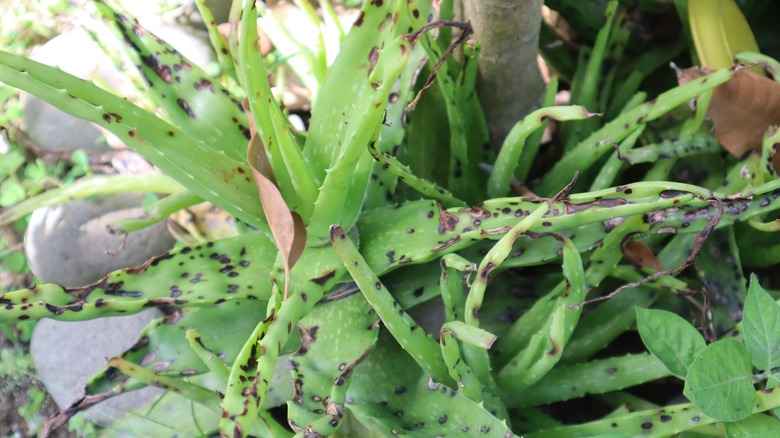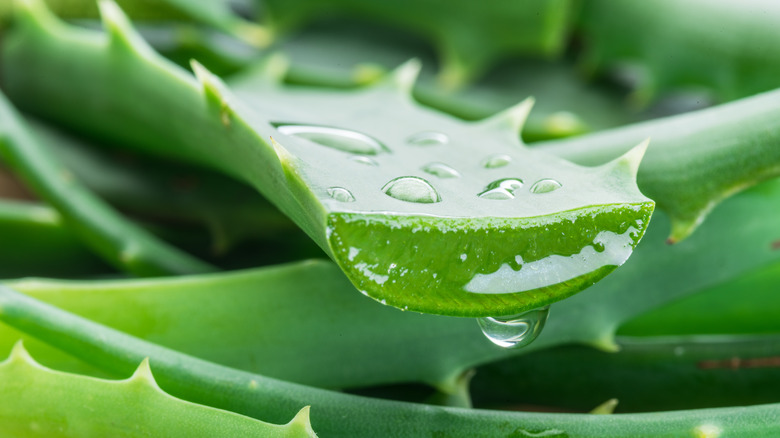What's The Best Way To Treat Black Spots On Aloe Vera?
Aloe vera, the long-leafed and spiny succulent you may commonly associate with a searing summer sunburn, has been used in medical treatment, skincare, and beauty routines for centuries. According to the Indian Journal of Dermatology, the Greeks saw aloe as a cure-all plant to combat any disease. Egyptians held the same reverence, referring to it as the plant of immortality. Nowadays, our use of aloe is mostly limited to the skincare realm, but it's still an incredibly useful plant to keep around, especially in the hot, arid climates where it thrives.
Aloe vera has gained a reputation for being a low-maintenance and long-lasting plant, so it might be a bit shocking when you're faced with an issue like black spots along the leaves. Luckily, this phenomenon, aptly named leaf spot disease, has a cure, but it's still important to catch the symptoms early and prevent the further spread of this disease throughout the rest of the plant.
How to tell if your aloe vera has leaf spot disease
If your aloe has dark brown or black spots along its leaves, you're likely dealing with one of two things: overwatering or leaf spot disease. If you've been overwatering your aloe plant, the roots can begin to rot, killing the plant from the bottom up. Check the roots, make sure you're using soil meant for succulents, and ensure your pot has proper drainage. Aloe thrives in arid climates, and its soil should be completely dry when it comes time to water.
If that's not an issue for your plant, leaf spot disease is the most likely culprit for those dark patches. According to a study published in Plos One, leaf spot disease is a flurry of dark brown or black spots that gradually grow larger along the plant leaves. It's caused by a fungal infection that can quickly spread from leaf to leaf, so treating it before it takes over the plant entirely is important.
How to get rid of leaf spot disease
When it comes to leaf spot disease, there's no way to guarantee you can save the leaves that have already been affected. In some cases, a sprayable fungicide will do the trick, but it all depends on how far gone the infection has spread (via PlantVillage). If only a couple of leaves are affected, it's best to treat them with a fungicide and cut off the ones with spots. From there, you can burn them for an extra layer of insurance. It sounds dramatic, but it's the best way to ensure that the fungus won't spread any further. Make sure to also inspect the roots of the plant for any rot below the surface and cut out anything that doesn't look healthy.
Black spots on your aloe vera plant's leaves are definitely a sign that something needs to be done, but there's no reason to panic. Aloe is a notoriously hearty plant that can withstand a lot of damage, so the likelihood that it will survive with proper treatment is high. Just keep an eye out for any further symptoms, and you should be on your way back to a healthy plant.


